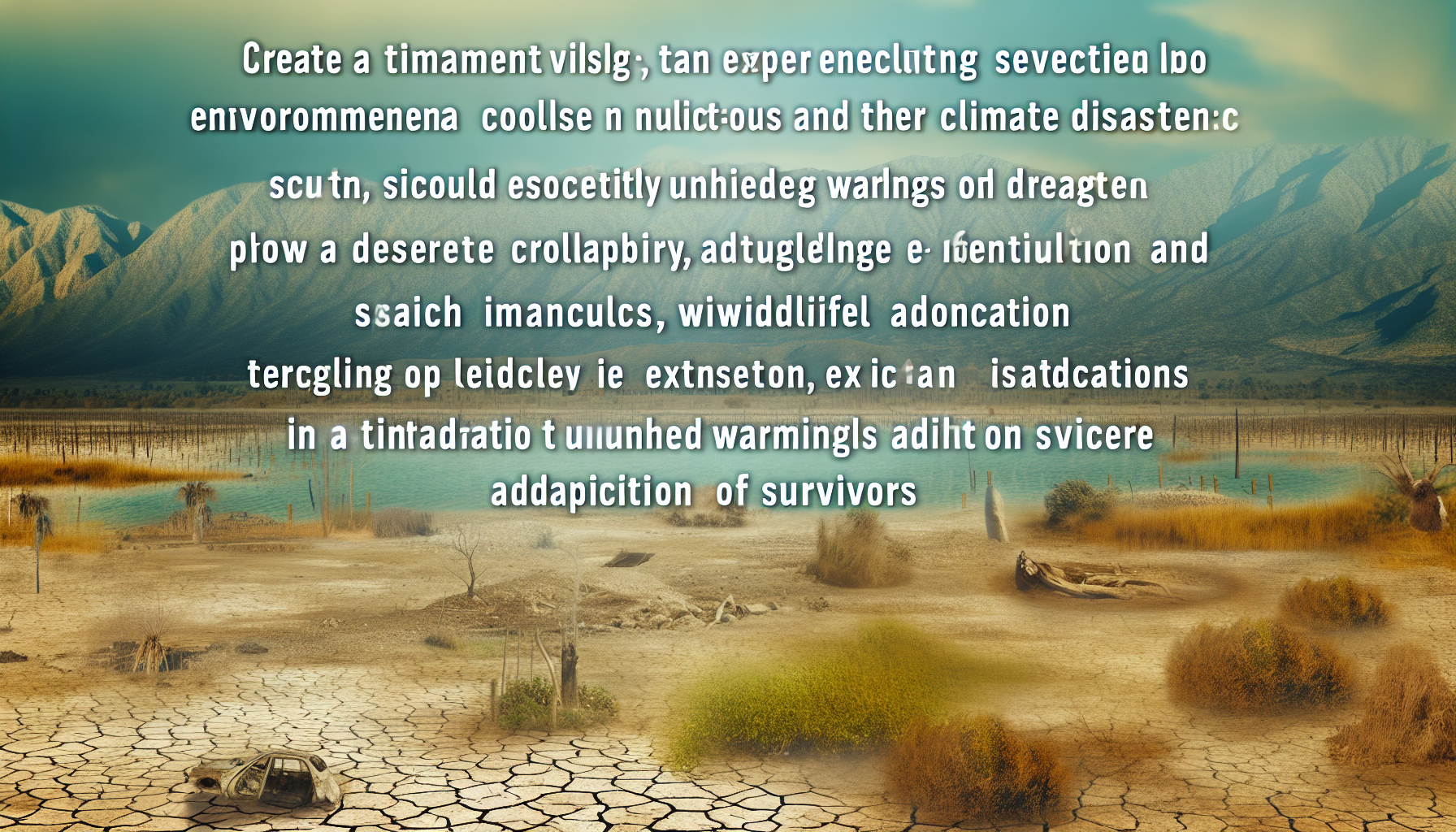Imagine stepping out into the expanse of what once was a fertile valley, now a sprawling canvas of cracked earth and dust. The sky above, a relentless dome of blue, shows no mercy, no sign of a single cloud. This is the new normal in regions where the rain has ceased to greet the earth. The transformation of once vibrant ecosystems into barren wastelands marks a silent, yet screaming testament to the world we’ve fostered.
The story is not unique to any single land. From the vast open spaces of the American West to the traditionally lush plains of sub-Saharan Africa, a choking dryness envelops the land. Entire water systems have vanished, leaving behind ghost rivers and lakes – their beds gaping open like the mouths of thirsty creatures in a silent howl. It’s a scene that sets a grim stage for what happens when the rain stops forever.
In these arid expanses, agriculture has become akin to alchemy. Farmers who once coaxed abundant yields from the soil now gaze over withered crops and barren fields. Supply chains are shattered, food prices skyrocket, and hunger becomes a gnawing presence in homes. The earth is barren – not out of a natural cycle, but because of a planetary fever that humankind failed to treat.
As we trek further into the drylands, the effects of this desiccation ripple through the foundations of societies. Cities, once beacons of civilization, encounter the rage of residents at empty taps and the whispers of unrest begin to surface. Governments crumble under the weight of water scarcity; power struggles erupt not over gold or oil, but over dwindling reservoirs and secret aquifers.
Wildlife has not remained unscathed in this futureless future. Once teeming with life, many ecosystems now lay silent. The carcasses of animals, left as a stark reminder of the balance we disrupted, dot the landscapes. Cries for preservation are lost in the wind – for what use are calls to action when the damage is irreversible?
But hope is not a luxury afforded in this world. Survival is an art, and innovation is sparked not by opportunity but necessity. The few who adapt find solace in recycled moisture and artificial oases – technology offers a band-aid over a gaping wound. Yet beneath the surface, there lies an acknowledgment that these are merely stopgaps, flickering candles in an incoming storm of darkness.
Yes, small pockets of humanity have budded resilience. But it is a resilience laced with desperation, a grappling onto the edges of a reality that continues to crumble away. This is a chapter from our book of existence that ends not with a triumphant hero, but with a question; a persistent, haunting query that asks – what could have been if we had listened to the whispers of our dying world?
As these arid wastelands hold up a mirror to what we have become, they do not reflect a society capable of halting its own end. They reflect a civilization in the throes of self-inflicted drought, echoing the warnings of a future written by the hands of neglect.
In the silence of the barren fields, amidst the rustle of dead leaves, there lies a conversation between the earth and those who walk upon it – a dialogue of actions taken and opportunities lost. It’s a conversation of consequence, one that we’ve been part of, yet chose to ignore. And so, we stand – witnesses to the arid wastelands of our own making, a monument to a rain that never comes again.
